BIOGRAPHY |
via email from Cenk ÇAKANDEMI. 9-25-09 He was born January 6, 1896 in I.stanbul. He joined WWI . He returned the I.stanbul Yesilkoy when he he was injured, then he joined Tayyare Mektebi (aviation school). Received his pilot certificate and fought against Russian fighters. He made bombing and reconnaissance flights, also shot down a Russian airplane during one of these flights. So, he is first Turkish pilot to shoot down an enemy airplane. Then he was taken prisoner by the Russians. He succeeded in escaping from Nargin land to Iran by swimming! Then he returned to Istanbul in 1918 and joined to 9th combat aircraft squadron. He designed a fighter plane but couldnt finish the project because of the Montroeu Ceasefire Agreement. He shot down an Greek airplane during WWI, and he was the Turkish pilot who flew both the first and last time in WWI. After the war, he designed and also created a few aircraft despite many diffulties. He rented a lumber mill and produced his first airplane in there. He used Greek aircraft engines he had obtained during WWI for his designs. He foundrd Hurkus Havayollari (freebird airlines) in 1954 Without doubt, he is the one of the greatest aviators of Turkey. |
|
AVIATOR VECIHI HÜRKUS Translated from tayyareci.com by Lloyd Murat Maxson and Sevim Hürkus Maxson 2002. Copyright © 2000-2001 Tayyareci Vecihi Hürkus, was born in 1896 in the family home by the sea at Akintiburnu Point in Istanbul's Arnavutköy district. The day, January 6th, was the day the Greeks celebrate the New Year by throwing a cross into the sea. His father was Faham Bey, a customs inspector, and his mother was Zeliha Niyir Hanim, a native of Vidin, who had come to Istanbul at the age of three. When Vecihi was three, his father died. So he and his very young widowed mother lived in his extended family with his uncles, aunts, and cousins. After a while an uncle, Sekür Bey, a somewhat eccentric character who was a master fencer and painter took them in. Later his mother moved with him and his brother and sister settled in Üsküdar. The middle of three children, Vecihi was a very lively and active child. He went to primary school in Bebek and studied at Füyuzati Osmaniye Rüstiye in Üsküdar and the Üsküdar Pasakapisi Idadi (high school). Interested in Arts and Crafts he transferred to the Tophane Sanat Okulu and graduated from there. In 1912 he enlisted in the Balkan War under his uncle, Staff Colonel Kemal Bey. He was deployed with the forces that had entered Edirne. At the end of the Balkan War, the Istanbul Central Command made him commander of the prisoner of war camp at Beykoz Serviburun. He wanted to become a pilot but was too young so he entered mechanic school instead. He was sent to the Bagdad front as a mechanic at the outbreak of the First World War. He was wounded in an airplane accident and returned to Istanbul. He then entered the Aviation School in Yesilköy and became a pilot. |
 |
|
In the fall of 1917 Vecihi was appointed to the 7th Air Division on the Caucasian front. There he was the first Turkish pilot to down an
enemy plane. Wounded and downed in a dogfight himself, he was taken prisoner by the Russians. As a prisoner he was sent to an
island in the Caspian Sea, but with the help of Azerbaijan Turks he swam off and escaped. He then returned on foot to Erzurum with a
fellow escapee. When he finally got back to Istanbul the war was winding down. He was appointed to the Capital Istanbul Air Defense Division. When Istanbul was captured he hid himself among the returning prisoners and entered a ship leaving Harem pier and going to Mudanya, Bursa and then to Eskisehir. There he joined the Independence War. In the Independence War, Vecihi made the war's first and last flights. He is credited with the capture of the Izmir airfield, and three times he received a letter of appreciation from the Turkish Parliament. He also won the coveted red-ribbon Independence Medal. During the War of Independence he married Hadiye, the daughter of the Police Commander, Ratip, in Akshehir. In Izmir and then in Istanbul two daughters were born to him, Gönül and Sevim. |
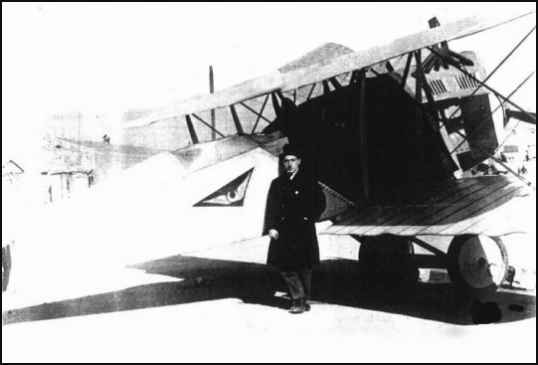 |
|
After the war he began to teach aviators at the newly opened aviation school in Seydiköy, Izmir. Then in the beginning of 1923, he was
appointed to the aviation section of the Izmit area. Three months later though, Major Fazil was killed in a training flight in Izmir and
Vecihi was recalled to Izmir. Besides teaching at the Army and Navy schools there he was also active in scientific pursuits. Here also he
began to think about nationalizing aviation in order to avoid the lack of planes and personnel that had dogged the country during the
war. It was at this point that he was ordered to Edirne to pick up a passenger plane that had mistakenly landed there. As a reward for his service, his name was given to the plane, and this event got him thinking again of building airplanes, an idea that he had since 1919. Using the many engines and engine parts from the spoils of war that had been taken from the Greeks, he designed and manufactured the first Turkish airplane, "Vecihi K VI". To get permission to fly, i.e., to certify his craft as airworthy, a delegation was assembled, but they couldn't find anyone in the technical delegation to fly or man the controls. Finally one of his friends said "Vecihi, we cannot give this license to you, but if you have confidence, jump in and fly, and save us." And so, on January 28, 1925, he made the first flight with the Vecihi K VI. Instead of being rewarded he was punished for flying without permission, and in anger resigned from the Air Force. He went to Ankara and joined the Turk Tayyare Cemiyeti (T.T.C.), as it was being established. He was given the responsibility for organizing the scientific division of the T.T.C. Atatürk was promoting aviation with the motto "The future is in the skies", and so the TTC was therefore established to raise up a generation of flyers and to be a viable foundation by receiving public donations. Specifically, its purpose was to open a school and a establish a national air industry. Vecihi wanted to take back the plane he had made, and promote the love of aviation using it in TTC fund-raising activities, but he was unsuccessful in retrieving it. To raise money then a series of medals was prepared. According to the size of the donation; bronze, silver, gold, and diamond-embellished medals were to be awarded, and for a 10,000 TL donation the donor's name would be given to the airplane. The first donation arrived from the city of Ceyhan, 10,000 TL by wire, so the first airplane (purchased from Italy) was named the Ceyhan. And Vecihi started making fund-raising trips with this airplane. At about this time Vecihi went to Europe for a second time (the first time was when he was with the military) to research European aviation. In Germany his delegation visited the Junkers and Rohrbach factories, which were considering the idea of establishing an aviation factory incorporated in Turkey. In France they visited a number of factories such as the Bregue, Potez and Henriot. In these factories Vecihi made test flights. After making an acrobatic flight on the record breaking Potez 25, the factory offered Vecihi to make a flight across the Atlantic, but under pressure from the Fransiz club this offer was quietly forgotten. On his return to Turkey on 19 October 1925 the management of the TTC resigned and the company's plans and projects were shelved. The Air Force was given the airplanes, vehicles and workers. Weary of military bureaucracy, Vecihi refused the position offered him by the Air Force. The National Defense Ministry agreed to open the Aircraft and Motor Company (Tomtash) in Kayseri. Vecihi accepted Tomtash's offer and went to Germany under their auspices. There he found some deficiencies in the Ju A-20 aircraft, and with the corrections he offered they produced its successor, the Ju A-35. On the 18th of June 1926 he was called back to his country by telegraph. But in order to buy the Ju A-35 it needed to first be test flown. Junkers especially wanted Vecihi to do this and to fight against the French champion Newport De Large. On August 1 1926 the performance battle took place and Vecihi won with the Ju A-35, proving the capability of the then most modern and advanced two-seater fighter craft to spray fire in every direction. After returning to his own country Vecihi, under employment of Tomtash, made round-trip flights between Ankara and Kayseri with a 14-passenger 3-engine Ju-23 and a 6-passenger single-engine Ju F-13. Vecihi proposed adding spare fuel tanks to the wings of the Ju A-35 in order to stay airborne longer and then make a direct flight from Ankara to Tehran. There he planned to show off the plane and, with the Turkish government's approval, sell surplus aircraft to Iran and other foreign countries. This would have brought recognition to Turkey as well as would have made a large profit for Tomtash. At this time, though, the Tomtash factory had still not been established and the Ju A-35 was not yet transferred to Tomtash so the plan was rejected. With such a promising start in Turkish national aviation, it was a shame that Tomtash wasn't able to continue past 1928. In that year, on account of bad management they declared, or more correctly, were forced to declare bankruptcy. Vecihi married Ihsan in 1925. She had been his sweetheart while he was in Istanbul before the War of Independence, but as he had gone to Mustafa Kemal's side in Anatolia, her family hadn't given her to him. Now, with her understanding, Vecihi divorced his wife, married Ihsan, and in 1927 a daughter, Perran, was born. After these years Vecihi returned to his old post in the technical division of the Turkish Air Association. In 1930 a trade fair convened in Ankara and exhibits in the "Halkevi" for local products were opened. Here Vecihi displayed pictures and models of locally produced airplanes including a model of the Vecihi Y-XI, which attracted a lot of interest. He continued to design new airplanes not wasting an idle moment. |
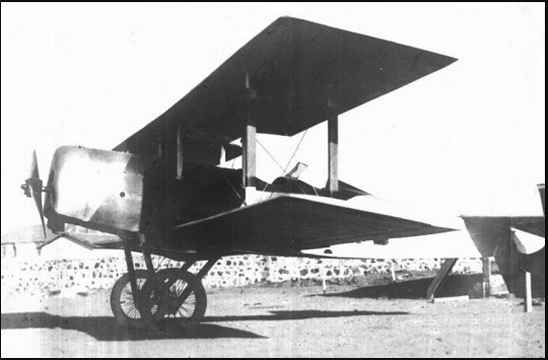 |
|
In 1930 he extended his vacation without pay for two months, rented a lumber store in Kadiköy, and in 3 months built the first civilian
Turkish airplane, (this actually was the second airplane he built), the Vecihi K-XIV. The first flight was on the 16th of September 1930 in
Kadiköy's Fikirtepe area in front of a group of reporters and a large crowd. The plane was a two-person single-engine sport and
instruction plane. He returned to Ankara with his plane, making an air-acrobatic display above the city. Afterwards the Prime Minister Ismet Inönü and a few commanders examined the plane and congratulated him. Vecihi, wanting to get formal permission, applied for an air worthiness certificate from the Ministry of Finance. On the 14th of October 1930, he received the reply, "Necessary permission is not granted as there is no one to evaluate the technical specifications of the airplane." |
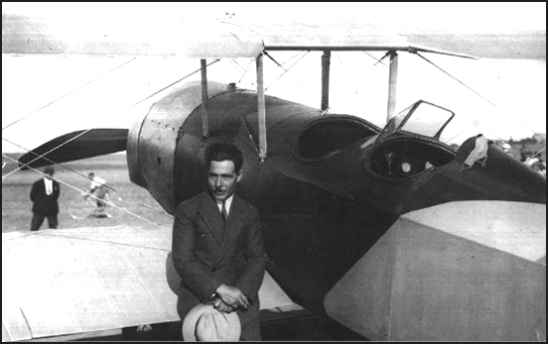 |
|
After this Vecihi spoke with several different ministries and finally received permission to have Czechoslovakia certify the plane's
airworthiness. He disassembled the aircraft and sent it by train and went on ahead to Prague by himself arriving on the 6th of December.
All official documents pertaining to the aircraft were first translated in Czech and when the airplane did come it was reassembled.
Samples of the construction material underwent every kind of technical control and then he was requested to fly the plane. He
successfully completed the various required performance flights. On April 23, 1931 Vecihi was invited to a reception in his honor at a
casino nearby. In the casino a banner was displayed with the words, "Long live Turkish aviation" and there he received permission
from the Czechoslovakian authorities to fly. On the 25th of April he left Czechoslovakia and for flying this time and arrived in Turkey on
the 5th of May. Not wanting his plane to remain idle, Vecihi had several talks with the postal authorities. They considered establishing the first post line between Ankara and Erzurum and between Ankara and Istanbul. At this time the Turkish Air Association planned another flying tour (to raise money). Starting in Ankara they made a circuit including Aksaray, Konya, Manavgat, Antalya, Fethiye, Mugla, Aydin, Denizli, Usak, Eskisehir, Adapazari, Izmit ve Yesilköy. It was a great success. The Association's divisions were made rich with the donations, but on the 3rd of November 1931 they sent a telegraph firing Vecihi's great assistant and machinist, Hamit, and cutting the fuel allowance paid to Vecihi, thus ending the tour of the "Vecihi XIV". In this situation it is no wonder that he left the Association. While he was touring, though, he had seen the love the youth had for flight and this sparked the thought of opening an aviation school. On April 21st 1932 the First Civil Aircraft School was established. Twelve students including two girls were accepted and the training began on the 27th of September that year. The purpose of the school was to introduce Turkish youth to aviation and later, the fully trained aviators were to be a reserve force for the air troops of the Turkish Republic. The school was to have two divisions, an engine-powered, and a glider division. The training was both theoretical and practical. They had a large workshop. They had a hanger in Kalamis and a small airport to use as well as an airport in Fikirtepe. The first twelve students were Sait, Tevfik, Muammer, Abdurrahman, Salih, Osman, Riza, Hikmet, Hüseyin, Kenan, Bedriye and Eribe and the training went off without any accidents. Besides teaching under difficult conditions he raised funds by making advertisements for some organizations such as the Monopoly Management (which controls Turkey's tobacco and liquor interests) and the Labor Bank. He also received help from some patriotic organizations. |
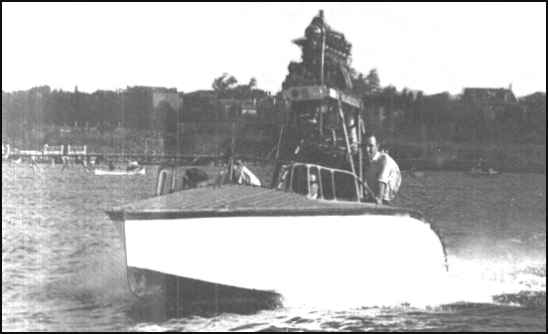 |
|
Nuri Demirag Bey gave 5,000TL, the first large donation, to build an airplane and thus in 1933 the cabin airplane "Vecihi K-XVI"
named Nuri Bey was built. In the same year a single wing, Vecihi K-XV was built and on August 30th (the Turkish victory holiday) five
planes, (two Vecihi XIV, two Vecihi XV and the Nuri Bey Vecihi-XVI) flown by the students made display flights in the skies above
Istanbul. In the school, a hydrofoil, Vecihi SK, with an airplane engine was also built. Of his students, Sait Bayav, Tevfik Artan, Muammer Öniz, Osman Kandemir, and notably the first Turkish women aviator, Bedriye Gökmen as well as Vecihi's own daughter (niece) Eribe successfully soloed. Because of financial difficulties, though, Vecihi closed the Civil Aviation School and was not able to award the graduated students their diplomas. Ataturk followed Vecihi's flights with admiration, both in the air and in the newspapers, and asked Fuat Bey, the head of the Turkish Air Association, about him. When he got the answer, Turkey's leader replied: "Oh, is that so? In that case, you open a new work with the name Turkish Bird and make use of Vecihi!" Vecihi was summoned to Ankara and so hopped into his plane and came. There he was very excited because what they had envisioned in Turkish Bird was the very same thing he had wanted to make a reality. As the head teacher he oversaw the work of young amateur pilots. With enthusiasm he made the Etimesut hangers, found an airfield for gliders in Inönü for the summer camp, and sent some of his earlier trained students, Sait Bayav, Tevfik Artan and Muammer Öniz to Russia for further education. Tragically, on the 29th of October 1936 his niece Eribe (who grew up as his daughter) died in a parachuting accident. In the fall of 1937 the Turkish Air Association sent Vecihi to Germany for training in engineering. He started with the advanced class of the Weimar Engineering School and graduated two years later. On February 27th of 1939 he received the Aircraft and Motor Engineering Diploma. On returning to Turkey he applied to the Ministry of Transportation asking for an Aircraft Engineering Certificate. But the authorities replied with a written rejection that "two years does not make an engineer". His engineering status was finally made official by a decision of the Supreme Court. The management of the Turkish Air Association changed and Vecihi's duties were given to others. He was appointed to Van, a place that in the conditions of that day had no technical possibilities. So he resigned from the Association and left. In 1947, after a long absence from aviation, he established a foundation, Winged Union, which young people showed a lot of interest in. In 1948 they acquired a Magister training plane from the Turkish Air Association and published a magazine named "Winged". The large majority of the Winged Union were university students and the foundation did not survive very long. In 1951, with five friends he established a crop dusting venture, "Turkish Wing". Sait Bayav and Muammer Öniz went to England and bought three Auster model planes. However, after returning to Turkey, there was a disagreement between the partners and Vecihi Hürkus gave up his rights in the company and left. In 1952 he went to England to make an advertisement for Paro baby food and bought a Proctor V model four-passenger light tourist craft. With this airplane he made advertisements for several clients. To advertise he distributed Paro baby formula, Paro soap and similar goods with small paper parachutes, and attached the names of banks written on banners to the wings. 1954 marked the 40th year of Turkish (and Vecihi's) history of aviation and a jubilee was held at the Yesilköy airport on August 6th. Later on the 29th of November he established Hürkus Hava Yollari (Hürkus Air Lines). He bought eight surplus planes from THY (Turkish Air Lines) with the credit of the Ziraat Bankasi. Facing one difficulty after another, he opened up routes that the government-controlled airline was not serving. When he wasn't given permission he tried to deliver newspapers but his airplanes were sabotaged and torn up. But he was none the wiser. Using his remaining plane he flew for the Maden Tetkik Arama Enstitüsü in southeast Anatolia, searching under difficult condition and in hostile terrain for uranium and other minerals. Finally they revoked his license. At the end of his life he suffered many hardships. He faced debt and although unable to fly he still had the insurance payments to make on his grounded aircraft. Even the meager pension that he received as a war hero was confiscated to pay for his debt. While he was writing his memoirs in Ankara he suffered a stroke. With his heart and eyes toward the skies, Vecihi Hürkus, closed his eyes to this life on July 16th, 1969, the day that mankind set off on the flight that would bring them to the moon. |


|